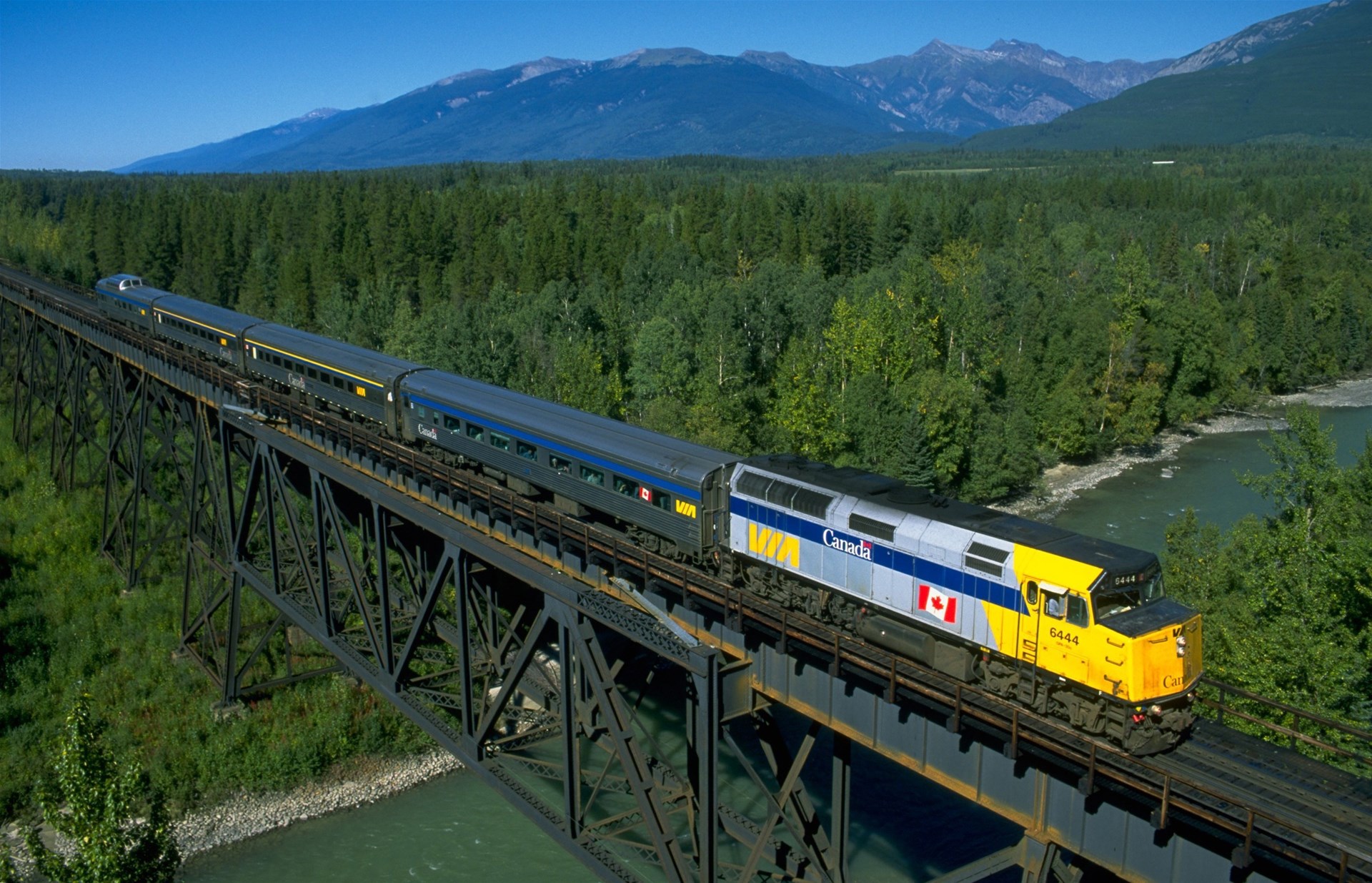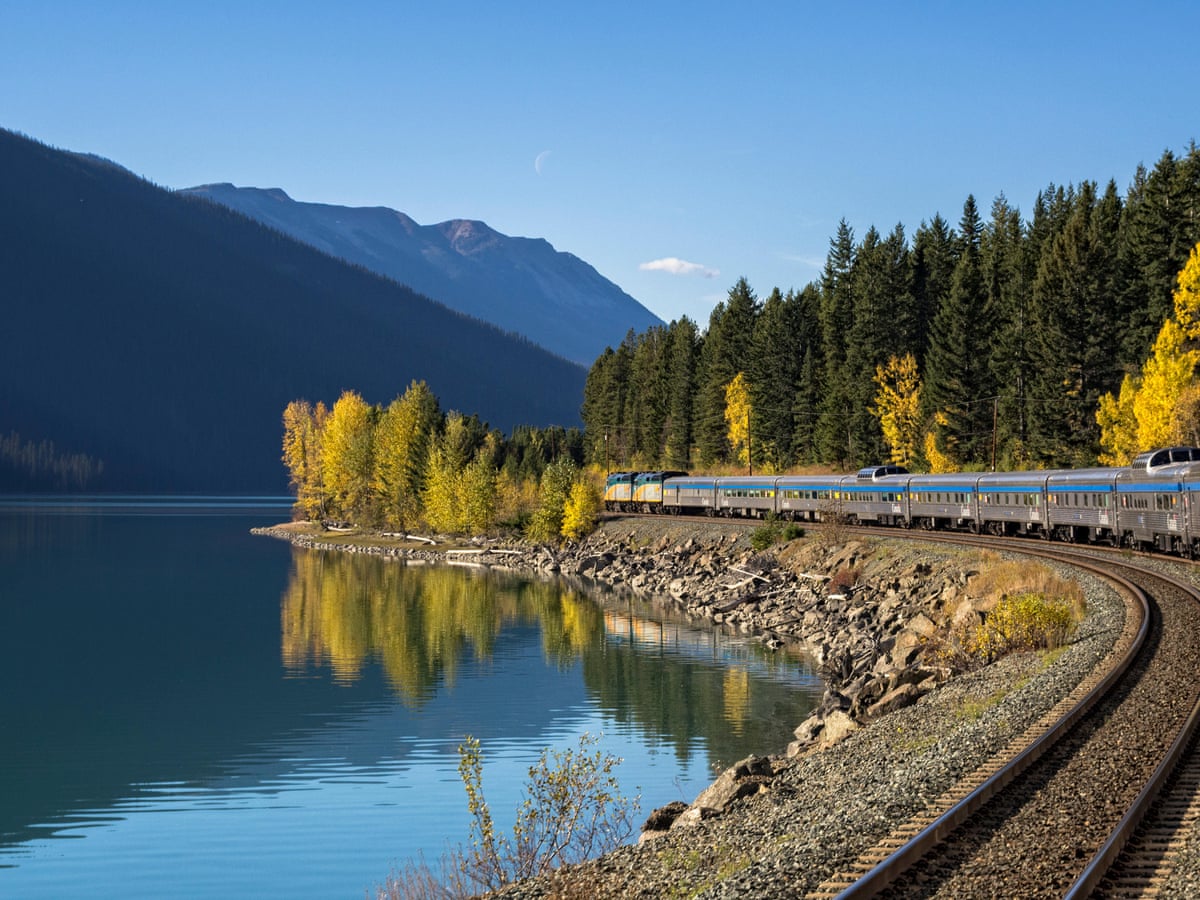Forget the flashy luxury of the Rocky Mountaineer. For a true taste of Canada’s untamed wilderness, hop aboard the Skeena — a rugged, retro rail journey that winds through rainforests, mountain ranges, and Indigenous homelands. With ticket prices starting around £160, it’s a budget-friendly alternative that delivers unforgettable scenery, real community connections, and an adventure that feels like a time machine ride into the heart of British Columbia.
A ride like no other
Somewhere deep in the British Columbian backcountry, the train suddenly jerks to a halt. “We’ll be making an unscheduled stop here to pick up another passenger,” announces Alain Vermette, the train manager. “In fact, we need to back up. We just missed his stop.”
Moments later, the train reverses, and out of the forest emerges a burly man in hunting boots and a baseball cap, a cigar tucked into his beard and a rucksack slung over his shoulder. “Afternoon, Alain,” he calls out. There’s no platform, so Alain hops onto the tracks and unfolds a portable staircase. This is no ordinary train ride — this is the Skeena.
Formally known as Via Rail Line 6, the Skeena isn’t just a scenic route, it’s a lifeline. Completed in 1914 as part of the Grand Trunk Pacific Railway, the line cuts across nearly 720 miles of western Canadian wilderness, connecting the coastal city of Prince Rupert with the Rocky Mountain town of Jasper. Through the Great Bear Rainforest, the world’s largest temperate rainforest and past towns so remote they don’t have roads, the Skeena isn’t just a train. It’s part public transport, part wilderness expedition.
Where wild places meet wild stories
The people who ride the Skeena are as unique as the landscapes it traverses. Known affectionately as “flaggers,” remote residents flag down the train using whatever is at hand, a high-vis vest, a jacket on a stick, or simply a wave from the bush. Hikers, hunters, and lost families all share space on this essential service, which operates three times a week and still honors these request stops like it’s the 1950s.
Inside the train, the retro charm continues. Brushed steel carriages with rounded corners feel like a cross between a vintage Airstream and a Wes Anderson set. Deep leather seats line the windows, and in the café lounge car, a spiral staircase leads up to a dome-viewing deck with wraparound bubble windows — ideal for soaking up wide-angle views of turquoise rivers, snow-dusted peaks, and wildlife-studded meadows.
“I love it when we’re delayed,” says train attendant Dany Clarissa with a grin. “It just means more time to enjoy the view.” And delays are common. Freight trains have right of way on Canadian railroads, so the Skeena often pulls onto sidings to let cargo behemoths — sometimes over three miles long — thunder past.

Through the heart of Indigenous homelands
The route winds through lands long inhabited by First Nations peoples, including the Gitxsan, Kitselas, and Tsimshian. Their presence is palpable — from totem poles rising behind village houses to names etched into the landscape.
History, too, flashes by in fleeting moments: abandoned salmon canneries, crumbling sawmills, silent gold mines, and towns that once boomed but are now ghostly and still. It’s a journey through both land and time. Wildlife makes regular appearances — bald eagles soar overhead, elk graze the shoulders of the track, and black bears lumber past wildflower-speckled clearings.
By nightfall on day one, the train reaches Prince George, a gritty city known as British Columbia’s “northern capital.” The overnight stop is a reminder that this journey isn’t rushed. Like the landscape it traverses, the Skeena moves at its own steady pace.
The climb to the Rockies
Morning light glints off the Fraser River as the Skeena departs Prince George the next day. Coffee and pastries are served, and the train eases into a slow-motion climb between the Cariboo and Rocky Mountain ranges. Small towns — Crescent Spur, Dunster, McBride — blur past, little more than clusters of clapboard houses, lone petrol pumps and the occasional general store.
Flurries of early snow dust the peaks. In just a few months, these ranges will be buried under ten-foot drifts, but the Skeena will continue running. The train’s front-mounted cowcatcher doubles as a snow plough, clearing the tracks like it has for decades.
Autumn brings its own rewards: golden birch, fiery maple, chestnut and burnt orange blaze across the forest canopy. As the Skeena crosses the Continental Divide, Mount Robson Canada’s tallest peak looms into view. It’s a postcard-perfect ending, made even more poignant by the wildfire scars still visible from August 2024, a reminder that this wilderness is powerful, beautiful, and vulnerable.

Why the Skeena matters
At 21 hours over two days, the Skeena doesn’t promise luxury — it promises authenticity. And for all its delays, detours, and request stops, it delivers something the Rocky Mountaineer never could: a front-row seat to the lives of people who call the wild north home.
As I step off the train in Jasper, breathing in the pine-scented air, the station clock reads 53 minutes past the scheduled arrival. “Pretty much on time,” says Alain with a grin. Out here, time bends. On the Skeena, that’s exactly the point.
How to ride the Skeena
Via Rail’s Skeena route operates between Prince Rupert and Jasper on Sundays, Wednesdays, and Fridays in both directions. Fares start from approximately £160 per person for economy class. The train has no sleeper cars, but passengers stay overnight in Prince George midway through the journey. Bookings and information: viarail.ca.



